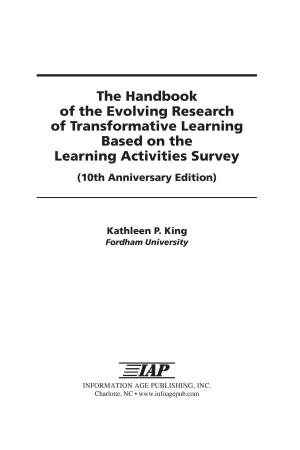The Changing Nature of Instructional Leadership in the 21st Century
Nonfiction, Reference & Language, Education & Teaching, Educational Theory, Leadership, Administration| Author: | ISBN: | 9781617359408 | |
| Publisher: | Information Age Publishing | Publication: | December 1, 2012 |
| Imprint: | Information Age Publishing | Language: | English |
| Author: | |
| ISBN: | 9781617359408 |
| Publisher: | Information Age Publishing |
| Publication: | December 1, 2012 |
| Imprint: | Information Age Publishing |
| Language: | English |
This third book in the Information Age book series, International Research on School Leadership, focuses on the changing nature of instructional leadership in the 21st century. Our goal is to examine instructional leadership from multiple educational and international perspectives. Unlike many leadership books that focus on conceptualizations and personal narratives, the seven chapters provide empirical evidence of how instructional leadership is evolving in the 21st century. From the effective schools research of the 1980s to today’s relentless calls for improved student performance, attention has focused on the instructional leadership roles and responsibilities of school principals, headteachers, and educational system leaders. The emphasis on student performance has gone global as evidenced by highlypublicized international studies, such as the Trends in International Math and Science Studies (TIMSS) and the Program for International Student Assessment (PISA), comparing student achievement in different countries. These developments have had substantial effects on school leaders, especially buildinglevel principals and headteachers. Rather than being the only ones overseeing school improvement aimed at increasing student learning, many school administrators are distributing leadership responsibilities to other administrators and teachers on their campuses. To fully understand instructional leadership in the 21st century, the book examines three important dimensions of instructional leadership: (1) the current context for turning around lowperforming schools, increasing teacher effectiveness, and providing equitable outcomes for all students, (2) international perspectives of instructional leadership development, particularly the value of teacher coaching and leadership development for aspiring and practicing school leaders in a developing country, and (3) the obstacles instructional leaders confront as they deal with fiscal constraints, political pressure, diverse student populations, and highstakes standardsbased reforms.
This third book in the Information Age book series, International Research on School Leadership, focuses on the changing nature of instructional leadership in the 21st century. Our goal is to examine instructional leadership from multiple educational and international perspectives. Unlike many leadership books that focus on conceptualizations and personal narratives, the seven chapters provide empirical evidence of how instructional leadership is evolving in the 21st century. From the effective schools research of the 1980s to today’s relentless calls for improved student performance, attention has focused on the instructional leadership roles and responsibilities of school principals, headteachers, and educational system leaders. The emphasis on student performance has gone global as evidenced by highlypublicized international studies, such as the Trends in International Math and Science Studies (TIMSS) and the Program for International Student Assessment (PISA), comparing student achievement in different countries. These developments have had substantial effects on school leaders, especially buildinglevel principals and headteachers. Rather than being the only ones overseeing school improvement aimed at increasing student learning, many school administrators are distributing leadership responsibilities to other administrators and teachers on their campuses. To fully understand instructional leadership in the 21st century, the book examines three important dimensions of instructional leadership: (1) the current context for turning around lowperforming schools, increasing teacher effectiveness, and providing equitable outcomes for all students, (2) international perspectives of instructional leadership development, particularly the value of teacher coaching and leadership development for aspiring and practicing school leaders in a developing country, and (3) the obstacles instructional leaders confront as they deal with fiscal constraints, political pressure, diverse student populations, and highstakes standardsbased reforms.















